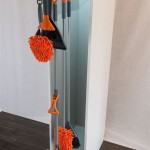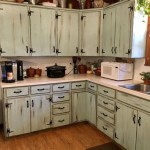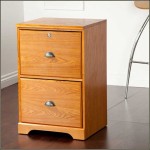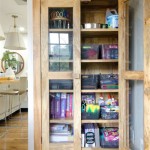Review of Primitive Corner Cabinet References in Five Nights at Freddy's
The Five Nights at Freddy's (FNaF) franchise, created by Scott Cawthon, is renowned for its intricate lore, jump scares, and unsettling atmosphere. Within the various installments of the series, environmental details play a crucial role in building suspense and contributing to the unfolding narrative. While the focus is often on the animatronic characters, subtle elements like the presence of a "primitive corner cabinet" can offer further insight into the game's world, its characters, and the overall storyline. This analysis will delve into the significance of such a seemingly innocuous object within the FNaF universe, examining its potential purpose and connections to the established lore. The interpretation of this object, while potentially varying among fans, is crucial in dissecting the deeper, more hidden meanings within the game's complex narrative.
The specific mention of a "primitive corner cabinet" is not frequently explicitly cited across every Freddy Fazbear establishment across all games. It is more accurate to state that variations of corner cabinets and archaic furniture styles can be found within a few of the games. Contextually, these appear as props. Regardless of an object's perceived simplicity, it contributes to the game world's overall aesthetic, lending authenticity and a grounded sense of history, even in the face of the supernatural and technologically advanced animatronics.
Implying Time Period and Setting
The presence of primitive corner cabinets within a FNaF location can strongly suggest the time period in which the establishment is set. These cabinets are typically associated with earlier eras, particularly the late 19th or early to mid-20th centuries. If a corner cabinet is designed with overtly rustic or simple construction, it could imply that the pizzeria in question is either older than previously assumed or situated in a location where old-fashioned aesthetics are preserved. These details can significantly contribute to our understanding of why certain characters act how they do, and the evolution of entertainment offerings as a whole.
Furthermore, the state of the corner cabinet can reveal details about the pizzeria's upkeep and history. A pristine cabinet could indicate a well-maintained establishment, while a damaged or neglected one might suggest financial troubles, poor management, or even abandonment. This detail can then be weighed against the narrative of a seemingly perfect establishment and its inherent lies. Details like this are often overlooked, but add to the rich information that the game presents.
Moreover, the location of the cabinet within the pizzeria may be just as important. Is it situated in a public area, like the dining room, or tucked away in a back office or storage room? Its location can reveal its intended purpose and possibly provide clues about the characters who might have interacted with it. If the cabinet is locked or obstructed, it hints at the presence of hidden secrets or forbidden areas within the establishment. In that case, it may also inform us of the intentions of some characters and their need to keep something safe from unwanted attention.
Connection to Lore and Backstory
The existence of a primitive corner cabinet can sometimes be linked to specific elements of the FNaF lore. The cabinet might be an artifact from a time before the events of the games, possibly belonging to the original owners of the pizzeria or a previous iteration of the establishment. It could even be a personal item brought in by one of the characters, such as William Afton or Henry Emily, hinting at their past and motivations.
Consider the possibility that the contents of the cabinet, if visible or hinted at, could hold significant meaning. Old photographs, documents, or even seemingly innocuous items might provide clues about the characters' relationships, past crimes, or the true nature of the animatronics. Examining the visual details surrounding a primitive corner cabinet can be vital in deciphering hidden messages or easter eggs within the game.
The cabinet's appearance, such as its color, design, and any distinguishing marks, could also be related to specific locations or time periods within the FNaF universe. For example, a cabinet with a particular pattern or style might be associated with a specific region or era, connecting it to other events or characters in the franchise. The details become important when trying to determine the time period and its relation to character motivations.
Symbolic Meaning and Psychological Impact
Beyond its practical function and potential connection to the lore, the primitive corner cabinet could also serve as a symbolic object within the FNaF games. Corner cabinets, by their very nature, often evoke a sense of domesticity, history, and tradition. Their presence in a location like a pizzeria, which is inherently associated with childhood and entertainment, can create a sense of unease or contrast, making the setting feel both familiar and unsettling. We also have to consider the use of this object as a prop that would realistically be used during the game's time period.
The cabinet's association with the past can also serve to remind the player of the darker undertones present within the FNaF franchise. The ghosts of children who were murdered and trapped within the animatronics haunt the games, and the presence of a cabinet that seems to belong to a bygone era can serve as a constant reminder of their lost innocence and the passage of time. Something new reminds of something old in a cyclical way. Their past serves as a constant reminder to the player as they attempt to survive.
Finally, the cabinet's placement in a dark or foreboding corner can amplify its psychological impact. Corners are often associated with fear and the unknown, and the presence of a primitive cabinet in such a location can enhance the sense of dread and vulnerability that the player experiences throughout the game. These details serve to enhance the overall tone of the game and its ability to elicit a real fear response from its players.
In analyzing the significance of a primitive corner cabinet in FNaF, it's crucial to assess its potential influence on the game's atmosphere, narrative, and symbolism. While seemingly insignificant, this object can contribute to the overall sense of realism, history, and unsettling tension within the game, adding depth and complexity to the FNaF universe. The consideration of such a detail highlights the importance of looking beyond the more obvious elements of the game to unravel its many secrets and hidden meanings. Considering this is key when determining the intentions of our characters and piecing together the hidden narrative.

The Theater Fnaf Secret Of Mimic Guide Ign

The Theater Fnaf Secret Of Mimic Guide Ign

Fnat Security Breach Details And Easter Eggs
With The Five Nights At Freddy S Around Corner What Are Some Things You Would Like To See In And Stuff Want Avoid

The Theater Fnaf Secret Of Mimic Guide Ign

Five Nights At Freddy S Sister Location Fan Theories Wmg Tv Tropes

The Theater Fnaf Secret Of Mimic Guide Ign

The Theater Fnaf Secret Of Mimic Guide Ign

The Theater Fnaf Secret Of Mimic Guide Ign

Ms Dr Professor Jessica On Game Jolt Ultimate Custom Night Review A Little Bow To Close Off This Era
Related Posts








